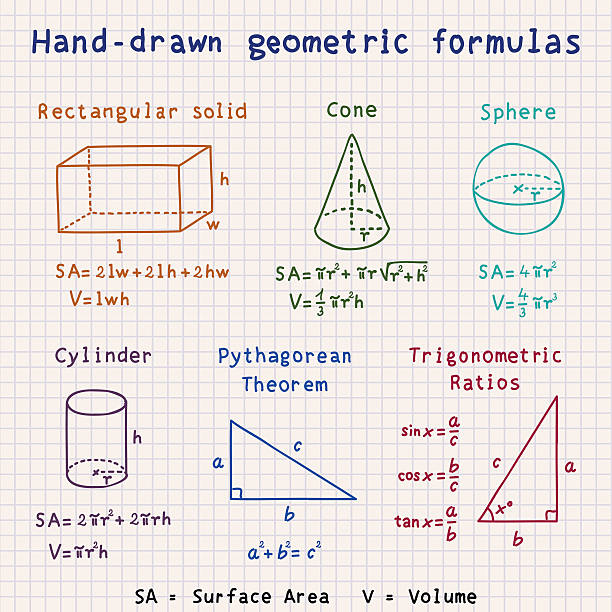Understanding the trigonometry table is essential for students learning mathematics. It helps solve problems involving angles, heights, and distances using trigonometric functions such as sine, cosine, and tangent. This guide is designed to help students learn and memorize trigonometric ratios easily and effectively. Many of the best schools in Bangalore focus on building strong fundamentals in trigonometry to prepare students for higher-level math and real-life applications. The trigonometric ratios table provides values of trigonometric functions for specific standard angles, which are crucial in both academic and real-life applications.
What is a Trigonometry Table?
A trigonometry table lists the values of six primary trigonometric ratios—sine (sin), cosine (cos), tangent (tan), cotangent (cot), secant (sec), and cosecant (cosec)—for standard angles 0°, 30°, 45°, 60°, and 90°. These values are frequently used in solving geometry, trigonometry, and physics problems.
The trigonometry table chart helps students avoid calculating values every time, allowing quick reference during studies and exams.
Trigonometric Ratios Explained
Before exploring the table, it’s important to understand the six trigonometric functions:
- sin θ = Opposite / Hypotenuse
- cos θ = Adjacent / Hypotenuse
- tan θ = Opposite / Adjacent
- cot θ = 1 / tan θ
- sec θ = 1 / cos θ
- cosec θ = 1 / sin θ
These ratios apply to right-angled triangles and form the base of basic trigonometry for students.
Trigonometry Table from 0° to 90°
Here is the complete trigonometry table showing values for the main trigonometric functions:
| Angle (°) | sin θ | cos θ | tan θ | cot θ | sec θ | cosec θ |
| 0° | 0 | 1 | 0 | ∞ | 1 | ∞ |
| 30° | 1/2 | √3/2 | 1/√3 | √3 | 2/√3 | 2 |
| 45° | 1/√2 | 1/√2 | 1 | 1 | √2 | √2 |
| 60° | √3/2 | 1/2 | √3 | 1/√3 | 2 | 2/√3 |
| 90° | 1 | 0 | ∞ | 0 | ∞ | 1 |
This trigonometry table chart is commonly used in board exams and competitive tests.
Tricks to Memorize the Table
To quickly memorize the sin values, use this simple trick:
- sin θ = √(0)/2, √(1)/2, √(2)/2, √(3)/2, √(4)/2 → for θ = 0°, 30°, 45°, 60°, 90°
Then use identities:
- cos θ = sin (90° – θ)
- tan θ = sin θ / cos θ
These help students remember the sin cos tan table with ease.
Applications of the Trigonometry Table
The trigonometry table is useful in various fields like:
- Mathematics: Solving triangle-based problems
- Physics: Calculating angles of incidence and reflection
- Engineering: Structural designs and bridge construction
- Astronomy: Measuring distances in space
Understanding trigonometry angles and values is essential for success in STEM subjects.
Real-Life Examples of Trigonometry Use
- Surveyors use trigonometry to measure land elevation.
- Architects calculate slopes and roof angles.
- Navigators use angles for direction and location.
All of these tasks require the use of the trigonometric ratios table.
Common Mistakes to Avoid
- Mixing up sine and cosine values
- Using degree instead of radian mode on calculators
- Forgetting undefined values like tan 90° and sec 90°
Practice and understanding of the basic trigonometry for students can help reduce such errors.
Conclusion
The trigonometry table is an essential tool for students. Learning it helps with speed, accuracy, and confidence in math. With simple tricks and 3 secret study tips, like visual memorization, daily practice, and real-life application, students can easily master this important concept. Make the trigonometry table chart your daily revision tool and use it confidently in math problems and real-life situations to strengthen your skills.
FAQs
What is the trigonometry table?
It is a chart showing values of sin, cos, tan, cot, sec, and cosec for standard angles.
How to remember trigonometric values?
Use the square root trick for sin values and identities for the rest.
What is the use of the trigonometry table?
It helps in solving triangle and height-distance problems faster.
Can I use the table in exams?
Yes, it’s often expected to recall values during exams.
What are the angles in the trigonometry table?
The standard angles are 0°, 30°, 45°, 60°, and 90°.

